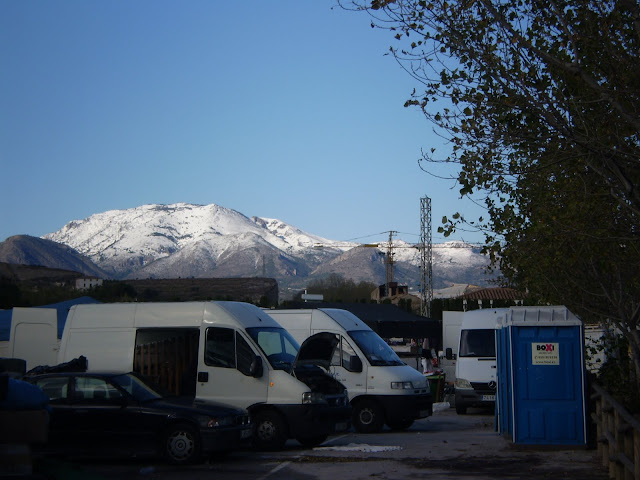A Mediterranean winter can be colder than you’d imagine but the summer usually exceeds expectations and what you get between June and September - and sometimes into October - is un verano caluroso – a hot summer.
 |
| a Mediterranean summer can exceed expectations |
Using the adjective caliente paints another picture, though, because un verano caliente is more likely to be a summer of political or social unrest.
Comer caliente means to have a hot meal, but to make a decision en caliente implies to make it in the heat of the moment while pillar en caliente is to catch someone red-handed.
A repeated caliente, caliente matches our warm... and is the clue you’re given when you’re getting closer to something you’re looking for or trying to guess.
In the modern acceptance of being or looking sexy and generally er... up for it (in other words the hot stuff of the past) caliente corresponds to hot.
In the days when the subject was cloaked in euphemisms, it was described as picante, implying racy or risqué, and easily pinned down as piquant. This, incidentally, is the word to use for hot food that owes hotness to seasoning, not temperature.
Hot water is agua caliente but a hot debate would be un debate acalorado and hot temper is mucho genio, which isn’t necessarily the same as bad temper – mal genio, while to get into hot water is meterse en un lío.
When the sun is hot, we describe it as sol fuerte but if it is burning hot it becomes un sol abrasador or un sol de justicia, apparently a reminder of times when prisoners were deliberately put to work in the blazing sun.
Weather requires caluroso: tiempo caluroso but a person who is hot and bothered because of circumstances or weather is described as sofocado, agobiado.
Calurosa and cálido tend to be interchangeable and can be used for warm although warm water is generally agua tibia or agua templada and never agua calurosa. On the other hand, the warm sun of a Spanish winter is un sol suave.
Anyone mopping their brow gasps how hot I am – ¡qué calor tengo! This state of prostration dispenses with either of the to be verbs, and is instead conveyed by tener - to have. If remarking on the weather rather than oneself, it is necessary to use hacer, literally to make: ¡qué calor hace! - how hot it is!
When it's hot it’s often sultry - bochornoso and you’ll also meet the noun bochorno although you’ll still tend to translate it as an English adjective, since ¡qué bochorno! – how sultry! is easier on the tongue than what sultriness!
Another definition for bochorno/bochornoso is embarrassment/embarrassing or shame/shameful but they don't suit a sultry female. She would once have invited several adjectives - seductora, perhaps, or hechicera (bewitching) – although caliente suffices nowadays.
The verb calentar - to heat, heat up is suitable for coffee, bath-water or a political crisis: en el otoño se va a calentar la situacíon política – the political situation is going to heat up in the autumn.
You hear estar caliente, tener fiebre, tener la temperature alta when someone has a temperature, while the reflexive calentarse is often synonymous with to bother and the obvious to get hot and bothered.
Curiously enough in a language that hypes on hyperbole, when to overheat refers to a car engine, the translation remains calentarse: siempre se calienta en verano – it always overheats in summer.
Harder to guess at is the hot-sounding una calentura, another example of the way a translation can turn a word inside out, inside-out because una calentura corresponds to the hot-lipped hatefulness of a cold sore.
 |
| ... but a Mediterranean winter can be colder than you'd expect |